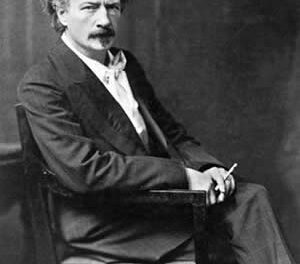“Southern trees bear strange fruit, Blood on the leaves, and blood at the root, Black bodies swinging in the southern breeze, Strange fruit hanging from the poplar trees.”
Abel Meeropol‘s song “Strange Fruit,” most popularly recorded by Billie Holiday, conjures horrifying imagery consequent to racism and hatred in the United States and provided the inspiration for the title of award-winning playwright Dominique Morisseau‘s Blood at the Root (currently in production at Raleigh Little Theatre). It is the same imagery that students at Jena High School imposed on their peers when they threw nooses over an oak tree on campus in September of 2006 – an act of violence that some in the Jena community shrugged off as a prank. Racial tensions continued to mount, and in the weeks to come a large portion of Jena High was destroyed in an arsonist-set fire, two racially-charged fights occurred off campus resulting in criminal charges against various participants, and ultimately an infamous altercation occurred on the grounds at Jena High School. While time has yet to clarify the details surrounding the impetus of the fight, the results left one white student briefly hospitalized and six black students arrested, charged with attempted murder, and charged as adults though only one was 18 years old at the time. The charges, and the disparity between the handling of the nooses and the handling of the fight, would spark an ongoing social conversation on racial double standards and miscarriage of justice in the United States for years to come.
Blood at the Root evolved from exercises, discussions, and workshopping the play between playwright Morisseau and the six students at Penn State for whom she originally wrote the piece. The story revolves around Raylynn, a young black senior at Jena High, whose brother De’Andre is directly involved in an altercation in which Colin, a white transfer student who struggles to fit in at his new school, is badly beaten by six black students. The conversation extends beyond the Jena Six and the nooses hung from “Ol’ Devoted” in the perspectives of Justin, Toria, and Asha – a black male student and white female students who feel at home in neither community. As the characters navigate the web of motivations, facts, and rumors, nothing is black and white, but with racial injustice at the root of the conflict, everything is.
Director Lormarev Jones has turned RLT’s production of Blood at the Root into the inevitable, imperative mirror that modern society often requires of its art. Her young cast of 12 deftly navigated the flow between naturalistic dialogue (despite grappling with the dialect at times), highly stylized movement, and spoken word. In his debut with RLT, high school senior Myles Moore (De’Andre) seemed most at home with these tools utilized by both playwright and director. His final monologue alone was worth the price of a ticket. Moore’s work was not the only worthwhile contribution. Aysia Slade (Raylynn) and Carl Staub’s (Colin) chemistry came especially naturally for the college students, which paid off by raising the stakes of a critical conflict later in the show. Brynna Rosenberg (Toria) embodied the well-meaning ally by both asking and receiving challenging questions on race and community. Jenna Davenport (Asha) and Roman Lawrence (Justin) delivered brave performances that conveyed the social consequences for young people living outside of the stereotypes constructed for white girls and black boys in the Deep South.
A multitude of powerful imagery, conjured by Jones’ evocative choreography and a thoughtful production team, fortified the emotional impact of the performance throughout the evening. Effective spotlights in Thomas Matrejek’s lighting design highlighted significant interactions and appropriately elevated the daunting presence of scenic designer Kylee Silvas’ looming oak tree that created the backdrop and the heart of most of the action of the play. Silvas’ effective use of simple scenery afforded the actors timely scene changes in keeping with the fluidity of movement in Jones’ blocking and choreography. Jeremy David Clos‘ costume design clearly conveyed definitive high school cliques. Clos made several powerful choices for individual costume pieces – a prison jumpsuit and a confederate flag t-shirt, to name a few – that effectively emphasized tension in several moments throughout the performance. Perhaps the most impressive design contribution to the production was that of sound designer Areon Mobasher‘s original compositions which carried out the musicality mandated by the playwright. At least one of his works could easily be heard on the radio today.
RLT’s Blood at the Root seems to direct its message to a young adult audience with the clear omission of adults from the cast. The roles of Principal Miller and the District Attorney are projected as silhouettes looming over a student assembly in one scene and an ensemble member briefly doubles as a police officer. Given the visible reactions from young people in the audience, it worked. The production utilizes that not-so-long-ago event to call out injustices still very present today and defies you to leave unchallenged. There is blood at the root and the soil continues to produce its crop. Blood at the Root is a call to action and a reminder that the lives of our youth, especially those in the margins, depend on it.
Blood at the Root continues through Sunday, October 13. For more details on this production, please view the sidebar.












